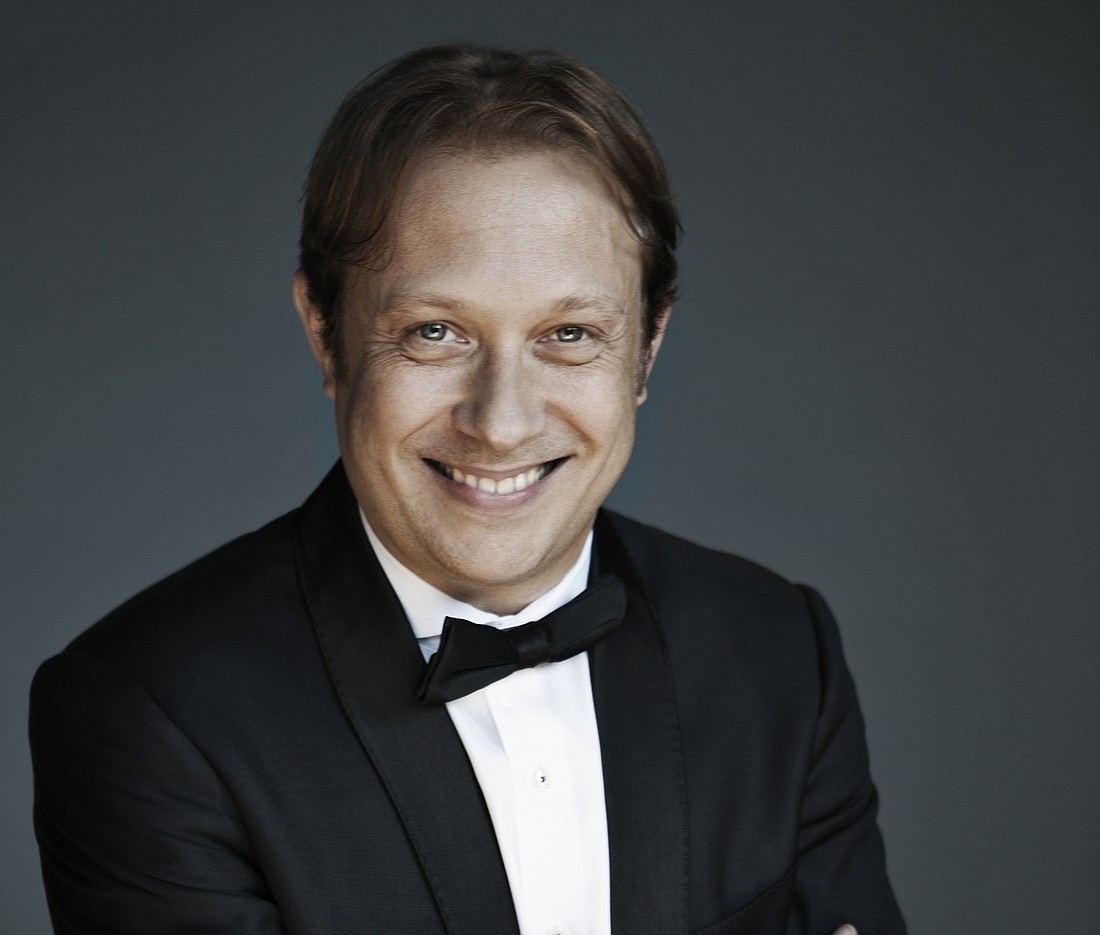- May 5, 2025
-
-
Loading

Loading

The fourth set of Masterworks concerts by the Sarasota Orchestra presented a guest conductor, an unusual program and a dazzling soloist — quite a combination.
Guest conductor Ludovic Morlot, returning to the Sarasota Orchestra podium some 13 years after his first visit, offered a program of Leoš Janáček, Claude Debussy and Antonín Dvorák, with violin soloist Sarah Chang, which I heard Sunday afternoon.
At first, I was rather puzzled with the selections because Janáček, Debussy and Dvorak seemed like an odd mix, but as the orchestra played these pieces, the reasoning behind the programming became clear.
Janáček composed his opera “The Cunning Little Vixen” in 1926, and the two-movement suite extracted includes some of the preludes, themes and motives used throughout the opera. Obviously, Janáček was familiar with Debussy and his music; these two movements are virtually “Czech impressionism,” given their ambiguous chords, progressions and etherial quality. The atmospheric and wandering themes gave the wind soloists of the orchestra ample opportunity to shine forth at their best.
Yes, it was new to orchestra and audience but a most interesting and intriguing offering. It really made me want to see the opera and how all this music was eventually developed.
Morlot is an interesting conductor. He recently left the Seattle Symphony after eight triumphant seasons and was named conductor emeritus upon his departure. His conducting is simple, straightforward and all about the music. He is a former violinist, and his care and molding of the sound of the strings of the orchestra bears this out. He shapes his phrases musically and is intent on both orchestral color and balance —most important in this program.
Morlot’s French heritage came to the fore in his interpretation of “Iberia,” from Debussy’s “Images for Orchestra.” Debussy’s Spain is a very French one yet different from that of Ravel and Chabrier, and certainly of Tchaikovsky and Rimsky-Korsakoff. Each of the three movements is a kaleidoscope of orchestral color, again with outstanding solos by Betsy Traba, flute; Bharat Chandra, clarinet; Nick Arbolino, English horn, together with concertmaster Daniel Jordan and principal violist Rachel Halvorson.
Each of the three movements swept the audience into “streets and byways,” “fragrances of the night” and “morning of the festival day” with great splashes of orchestral color, themes and rhythm that define Debussy as the father and master of musical impressionism.
Dvorák originally wrote his “Legends” as a series of 10 short pieces for piano duet but later orchestrated them at the request of his publisher. The three selections we heard were simple, songlike works, but they were well-rooted in the Czech folk tradition and also kept the pastoral feeling of the Janáček piece very much alive.
Everyone was well primed for Chang and her performance of the Dvorák Violin Concerto. Although it is not as popular as the concertos by Brahms, Tchaikovsky and others, it is a major concerto that deserves to be heard more often.
Chang is indeed a prodigious player, with charm, elan and technique to burn. Hers is not a big, heroic sound but compact and concentrated.
It seems that one of the “dead spots” on the Van Wezel stage happens to be where the soloists stand. Nevertheless, Chang’s artistry and passion was certainly in evidence.
She does often end her phrases with gestures of grandeur, but her overall musicality and just sheer ability with the instrument put all of this in the background. Her playing of this concerto was superb, from the first movement through the most lyrical moments of the second, to the musically and technically challenging music of the final Furiant, which ended the piece in a burst of technical agility. This was indeed a virtuoso performance.
So what seemed at first like a rather odd bit of programming turned out to be a special afternoon of music making and music understanding. And the Sarasota Orchestra performed with its usual skill, versatility and just good music making.